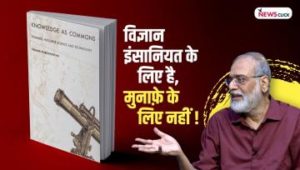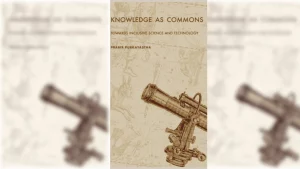Prachee Dewri presented a paper on ‘IPTA and the Music of Assam’. Her paper focussed on the music that was composed during the 1950s, with special focus on the works of Jyotiprasad Agarwala and Bishnuprasad Rava, who were two people who worked as partners in most of their artistic endeavours during this period. Prachee began with noting that these two artists had already begun experimenting with music in the thirties, moving away from the classical based music of people like Lakshmiram Baruah, and exploring the ‘folk’ genres of the region and used this music in their plays and films and had also recorded them. Agarwala and Rava also theorized on art after their involvement in the IPTA. She linked up how their theorizing on performative arts, like Agarwala’s “Shilpir Prithivi” and Rava’s “Asamiya Krishtir Samu Abhash” was manifested in their creations. The work of many more musicians who entered the fold of the IPTA during this period, some of whom were discovered by Agarwala and Rava, such as Bhupen Hazarika, Dilip Sharma, Sudakshina Sharma, Anandiram Das and Pratima Pandey Barua and who sang in diverse genres such as the Borgeet, Bongeet, Kamrupiya Lokageet and the Goalpariya Lokageet, was also traced briefly through playing some musical clips. Specifically, Prachee’s paper also focussed on how the IPTA promoted lesser known genres, and how these genres themselves influenced the composition of new music in the subsequent decades.
One would like to think that this was not a symposium of the ordinary kind, which are a dime a dozen in season, particularly in New Delhi. The rationale of this particular exercise was an exploration of the Marxist view of culture, particularly people’s cultural movements, and that surely entails something like a paradigm shift, transcending, but not necessarily denying, the established values of academic discourse. The activists and creative people who joined the discussion, the political workers, the media professionals, the younger crowd which stayed throughout — all these people brought perspectives which helped place the movement in its setting, and pointed to directions which progressive culture has to move towards in order to solve its current problems and renew its pledge to the people. One remembers in this connection the two occasions in Vivan Sundaram’s house in Kasauli, the first in 1979 and the second a couple of years later, when a closely knit group had met to discuss similar issues, and which had resulted in the birth of The Journal of Arts and Ideas. Some of these people were present on this occasion too. The level of commitment and intellectual rigour was very much in evidence more than three decades later, with newer and younger people joining in. As expected, the three days of the symposium saw the core crowd stay together late into the evening of each day, with SAHMAT showing some of the best films of the progressive movement, Dharti ke Lal, Neecha Nagar and Komal Gandhar, before a late community supper. The discussion, needless to say, continued till the end.
IPTA and the music of Assam
February 23, 2023
IPTA and the Music of Assam



